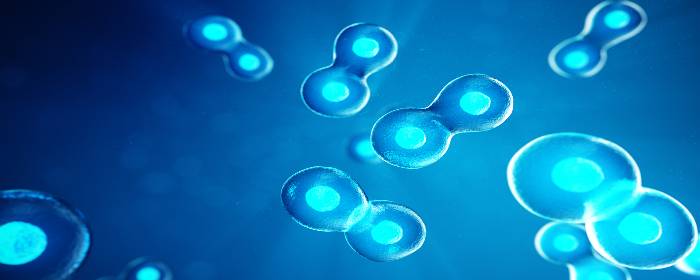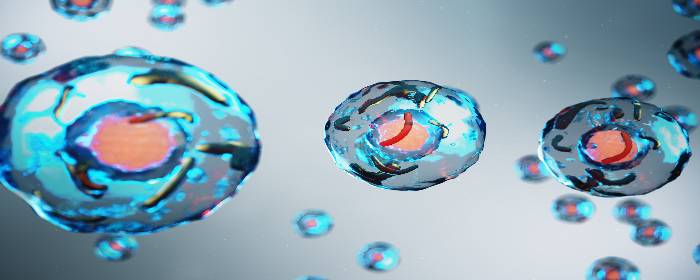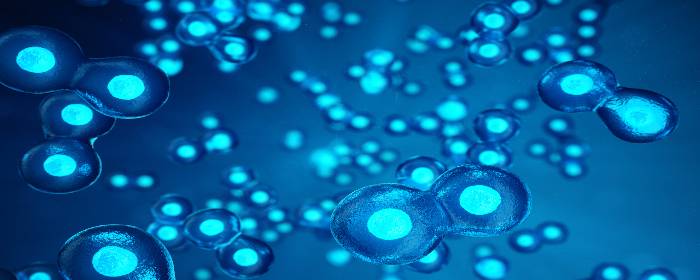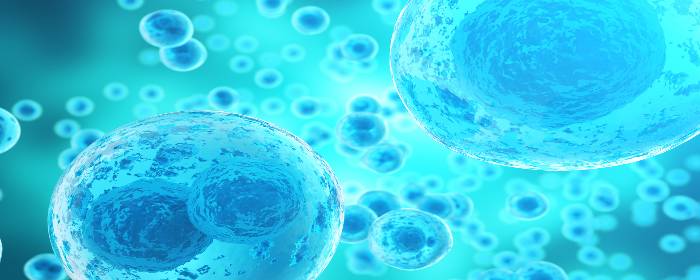
by admin | Apr 15, 2019 | Stem Cell Research, Alzheimer’s Disease, Stem Cell Therapy
Alzheimer’s disease is the most common form of dementia, and though its prevalence is growing, there are currently no medical interventions that are able to reverse or slow the disease. Most current therapies address the symptoms of Alzheimer’s disease rather than the underlying cause of the disease.
Stem cells appear to offer a promising opportunity for treating Alzheimer’s disease and other neurodegenerative disorders, and a recent review published in Current Alzheimer Research has covered research into the ways stem cells can be applied to these disorders. Specifically, the authors of the review discuss the stem cell sources that may offer the potential to treat neurodegenerative diseases and the mechanisms by which these stem cells may confer benefits to this set of patients.
According to data collected so far, stem cells may be both safe and effective in treating neurodegenerative disorders like Alzheimer’s disease, but the mechanism by which they produce benefits for those with these disorders is not entirely clear. There are some data that show that the replacement of degenerated tissue with new proliferative stem cells accounts for stem cell benefits in models of neurodegenerative disorders, while other data show that stem cells can lead to advantageous enhancements in the expression of synaptic proteins.
Evidence from other studies, however, suggest that stem cells help with neurodegenerative disease through the release of neurotrophic factors that lead to paracrine benefits. Additional studies point to modulation of the immune system as the way that stem cells may help those with neurodegenerative disorders.
Future research will help to elucidate the specific mechanisms by which stem cells can provide effective therapy for people with neurodegenerative disorders. It may be the case that a variety of stem cell types used in multiple ways can be helpful for neurodegenerative disease therapy, and research will help to delineate the different ways stem cells can be used and inform the therapies that are developed.
Reference: Bali, P, et al. (2017). Potential for stem cells therapy in Alzheimer’s disease: Do neurotrophic factors play a critical role? Current Alzheimer Research, 14(2), 208-220.

by admin | Apr 8, 2019 | Stem Cell Research, Stem Cell Therapy, Umbilical Stem Cell
Much of the initial excitement surrounding stem cells was that they have the potential to become other types of cells. Add cardiac stem cells to a heart damaged by a heart attack, for example, and perhaps those stem cells will become new heart cells and restore heart function. While this does occur—stem cells differentiated mature into adult cells—a fascinating and potentially more exciting use of stem cells is for what they secrete rather than what they become.
Over the past few years, researchers have become increasingly interested in the beneficial substances that stem cells secrete. Researchers refer to the collection of substances that stem cell secretes as its secretome. Stem cell researchers grow various kinds of stem cells in the laboratory and then measure the substances that the stem cells secrete to identify its secretome.
Dr. Hsieh and coauthors discovered that stem cells taken from human umbilical cord secrete an astounding number of helpful molecules. The scientists collected mesenchymal stem cells from Wharton’s jelly (which is a substance found in the human umbilical cord that is normally thrown away as medical waste). They then compared those mesenchymal stem cells with stem cells taken from bone marrow. The researchers found that the umbilical cord mesenchymal stem cells produced molecules that help protect nerve cells, helps nerve cells grow, and help blood vessels grow. The effects were much greater than from cells taken from bone marrow.
One interesting result from their scientific study was the effect of umbilical cord mesenchymal stem cells on injured nerve cells. The researchers deprived brain cells of sugar and oxygen to mimic what the cells would experience during a stroke. The substances secreted by stem cells protected the nerve cells during this harsh treatment. This effect was much stronger in the umbilical cord stem cells compared to the bone marrow stem cells.
Another interesting result from this research was that umbilical cord mesenchymal stem cells helped blood vessel cells organize and form new blood vessels (“tubes”). This could be very important for establishing blood flow to damaged tissue from burns, frostbite, heart attack, or stroke.
These results show that mesenchymal stem cells taken from umbilical cord tissue (Wharton’s jelly) have a unique secretome, which is more potent than similar cells taken from bone marrow. This research is particularly important for patients who have suffered an ischemic stroke or heart attack, as it may provide a clue for a way to treat these conditions in the future.
Reference: Hsieh et al. (2013). Mesenchymal Stem Cells from Human Umbilical Cord Express Preferentially Secreted Factors Related to Neuroprotection, Neurogenesis, and Angiogenesis. PLOS One.2013; 8(8): e72604.

by admin | Apr 3, 2019 | Pain Management, Stem Cell Research
Chronic low back pain is a common condition that can significantly reduce the quality of life. The degeneration of the intervertebral disc is one cause for low back pain, and there is no therapeutic intervention that effectively reverses this type of degeneration. Both non-surgical and surgical treatments that are currently used for chronic low back pain aim to help the symptoms associated with the condition but do not address the underlying cause. Recently, however, researchers have begun to explore the ways in which stem cells may be used to help regenerate the intervertebral disc to restore functioning and eliminate low back pain over the long-term. A review of the relevant literature was recently published in Translational Pediatrics.
The intervertebral disc does not have a large potential to regenerate itself, so it is a challenge to find the best cell sources to facilitate such regeneration. Adult mesenchymal stem cells, which are found most often in bone marrow and also in fat, or adipose, tissue are attractive candidates for this type of regeneration given their high capacity to proliferate and to differentiate into different types of cells. In addition, they can self-renew, are highly accessible, and unlike some other types of stem cells, there are no ethical issues associated with their retrieval.
Given the success of mesenchymal stem cell transplantation in preclinical studies of intervertebral disc degeneration, the use of these cells has progressed to clinical trials. Autologous bone marrow mesenchymal stem cells – meaning stem cells taken from the bone marrow of the patients themselves – have been reported in the treatment of disc degeneration in patients with leg and back pain. Reduced pain has been observed at one and two years after transplantation. Importantly, the clinical trials investigating the use of stem cells in intervertebral disc regeneration have provided evidence that the relevant procedures are not only effective but also clinically safe. Future research will help to clarify if and how these and other types of stem cells may be used to reverse intervertebral disc regeneration and the associated chronic low back pain.
Reference: Wei, A. et al. (2014). Mesenchymal stem cells: potential application in intervertebral disc regeneration. Translational Pediatrics, 3(2), 71-90.

by admin | Mar 29, 2019 | Mesenchymal Stem Cells, Stem Cell Research, Stroke, Umbilical Stem Cell
An ischemic stroke is a devastating event. An ischemic stroke is caused when a blood clot blocks blood flow to a portion of the brain. If the blood cannot deliver oxygen and nutrients, brain cells in the affected area die. Whatever functions that area of the brain once performed are now lost—brain cells do not regenerate the same way as other cells do.
Not surprisingly, researchers are trying to find ways to restore dead brain cells so that patients can regain function. Stem cells are one of the most promising options in this pursuit. Stem cells can reduce brain damage caused by ischemia (lack of blood flow, nutrients, and oxygen). Moreover, stem cells can help animals with stroke regain neurological function.
Scientists have wondered, however, whether mesenchymal stem cells taken from the umbilical cord can achieve the same effects. Umbilical cord tissue is plentiful and the cells taken from the umbilical cord have many incredible properties.
Dr. Zhang and researchers in his group extracted mesenchymal stem cells from umbilical cord tissue collected from humans. This umbilical cord tissue is usually thrown away after a baby is born, but researchers have been collecting this material because it is rich in mesenchymal stem cells. The researchers then created ischemic strokes in rats by blocking one of the arteries to the brain. They then used stem cells to try to block the damaging effect of stroke in these rats.
The stem cells were given to the rats intravenously. The stem cells moved from the bloodstream into the brain and collected in the area of the stroke. Some of the stem cells actually became new brain cells in the damaged area. Moreover, rats treated with stem cells had better physical functioning than animals who did not receive stem cell treatment.
While this study was performed in rats, the implications for humans are profound. This work shows that mesenchymal stem cells taken from the umbilical cord are capable of improving function after stroke. This is exited news since it is much easier to obtain stem cells from umbilical cord tissue that it is from bone marrow (which requires an invasive procedure).
Reference: Zhang, Lei et al. (2017). Neural differentiation of human Wharton’s jelly-derived mesenchymal stem cells improves the recovery of neurological function after transplantation in ischemic stroke rats. Neural Regeneration Research. 2017 Jul; 12(7): 1103–1110.

by admin | Mar 22, 2019 | Stem Cell Research, Cannabinoid, Stem Cell Therapy
Over 1 million patients worldwide have been treated with adult stem cells and have benefited from them. And nearly 20 000 adult stem cell transplants were performed in the United States in 2014 alone! How is that possible? What are stem cells? What do they do to your body? And why are so many benefiting from them? We take a look at these important questions surrounding the benefits of stem cells, as well as how CBD can help you get the most benefits from stem cells.
What Are Stem Cells?
Stem cells are a very special kind of human cells. They are cells of the body and are therefore somatic cells, found in your bone marrow and fat cells. They are a part of your body’s natural repair process. But why are they so special? Well, they have the ability to develop into many different cell types. This can range from anything from muscle, cartilage and even bone! Stem cells can divide and become differentiated, and are therefore used as a therapy called stem cell therapy. Stem cell therapy involves using a patient’s own stem cells to repair damaged tissues. When an organism grows, the stem cells specialize and take on specific functions, including skin, nerves, blood, muscle, and liver.
Because of their magical transformative powers, they have the potential to treat a number of diseases, including diabetes, Parkinson’s and even cancer. They also have the potential to treat a number of serious injuries, from a damaged knee, to even treating spinal cord injury! Eventually, they may even be used to regenerate entire organs, decreasing the need for organ transplants. Now that we know what stem cells are and how they work, let’s have a look at five of their biggest benefits.
1. Avoid Invasive Surgery and Related Risks
One of the biggest benefits of stem cells and using them in stem cell therapy is that it allows patients who would possibly have required heavy surgery to not have any such invasive surgery. Stem cell therapy uses material already in the patient’s body, which makes it minimally invasive and also cuts out the need for an overly stressful, invasive surgical procedure. Most stem cell therapy is performed as an outpatient procedure, i.e. you can just have it done in the doctor’s office! No need for an overnight hospital stay and those ridiculously high associated medical costs.
Your doctor will first conduct a bone marrow aspiration, in which he removes stem cells from an area of the body, such as the hipbone, through a long needle. These cells are then delivered to the area of injury. Once there they work their magic to create healthy new tissue to replace a damaged muscle, tendon, ligament, cartilage or bone. They become healthy new cells that your body desperately needs.
2. Minimal Procedure & Recovery Time
One of the greatest stem cell benefits is the minimal amount of time involved in the whole therapy, from the actual procedure to the recovery time required afterward. Procedures generally last from two to five hours, depending on the type of cell treatment being performed. After the minor procedure, your activity level may be a bit limited for the first week. This is merely to let the stem cell therapy process to work uninterrupted and without any possible inflammation. After just seven days you should be able to return to your normal activity! Your treatment will include some monitoring after the treatment, to ensure everything is working as it should.
3. Can Offer Pain Relief
Stem cell therapy is highly sought out by patients who experience chronic pain. As it should be! Because of stem cells’ ability to restore and regenerate, being used in pain management is a logical step. The use of stem cell therapy is being studied for a number of chronic pain conditions, particularly pain in the knees, hips, elbows, and back. Stem cell therapy can offer pain relief in the way that it reduces the inflammation which causes chronic pain. It also helps to heal regenerative conditions that lead to pain, such as arthritis. Promising results have been found in research into the use of stem cells to reduce arthritis pain. As every patient and their condition is different, long-lasting pain relief can never be guaranteed by any doctor.
4. No Risk of Rejection
When you receive stem cells from a donor, there’s always the risk that your body will reject them. Because the stems are coming from another person’s body, many complications can arise. The most common complication is called graft-versus-host disease. This is when blood cells formed from the donor’s stem cells believe your own cells are foreign and attack them. On the other hand, harvesting stem cells extracted from your own body to generate new cells and tissues means there is no risk of rejection!
5. Potential to Discover New Treatments
Because of the nature of stem cells, the possibilities for treating new diseases and finding new cures is endless. Stem cell therapy research provides great potential for discovering treatments and cures to a variety of diseases. Advanced research is going as far as limbs and organs being grown in a lab from stem cells, which are then used in transplants. With stem cells, scientists are able to test millions of potential drugs and medicine, without the use of animal or human testers.
How Can CBD Help with Stem Cell Treatment?
We’ve seen how amazing stem cells are. Now let’s have a look at how much more amazing they can be when combined with the effects of CBD! According to results from multiple trials, cannabidiol, or CBD, can help increase the number of stem cells growing within the body. CBD has even shown to positively contribute to the movement of the stem cells within the body. They can then do what they do best – help heal the body and reduce pain.
Nearly 20% of those who went through hematopoietic stem cell transplant (HSCT) used cannabis. Not only was it used to treat their physical and emotional pain, but it was also used in the hope that it will contribute to the replacement of bone marrow that has been destroyed by cancer. Because both CBD and stem cells have been seen to reduce pain, combined the possibilities for better treatments are endless.
How Can I Experience the Benefits of Stem Cells?
You’ve heard about the many benefits of stem cells. You’ve heard how popular it is. And you’ve heard the vast amount of injuries, diseases, and pain that it can treat. Perhaps it’s about time you had a look at it as a treatment for your condition. Whether you’re looking for an alternative treatment to your sports injury, your multiple sclerosis or your chronic fatigue syndrome, we’re here to help you along the way.
Get in touch with us to see if you are a candidate for Stem Cell Therapy. Also, check out our website shop to see available products.

by admin | Mar 14, 2019 | Spinal Cord Injury, Stem Cell Research
Traumatic spinal cord injury is a potentially devastating event in which the nerves and nerves cells in the spinal cord are damaged. In the United States, more than a quarter of a million people struggle with the lifelong consequences of traumatic spinal cord injury. The consequences of spinal cord injury vary from person to person, but each person usually must deal with several complications. Many people with spinal cord injury are paralyzed. They are at risk for pressure ulcers, blood clots in the legs, urine and bowel problems, and sexual dysfunction. Despite being paralyzed, as many as two-thirds of patients with spinal cord injury experience chronic pain, which is difficult to treat. Spinal cord injury can also affect how the heart and lungs function.
There are no specific treatments for spinal cord injury. If the injury is treated early, steroids and spine surgery/neurosurgery can help reduce long-term complications. In some cases of incomplete spinal cord injury, physical therapy can help people regain some degree of function. For the most part, treatment is aimed at reducing symptoms rather than curing the injury. Treating the symptoms helps make the disease less of a burden, but is by no means the same as a cure.
Because spinal cord injury has such long-lasting and devastating effects, researchers are actively pursuing ways to heal injured spinal cord nerve cells. One possible way to do this is through the use of stem cells.
Liu and coauthors conducted a clinical trial on 22 patients with spinal cord injury. The doctors collected mesenchymal stem cells from umbilical cord tissue that would normally be discarded as medical waste after delivery. They purified the stem cells and then used them to treat the injured patients. Astoundingly, stem cell treatment was effective in 13 of 22 patients. Patients who achieved benefit from stem cells enjoyed the return of motor function, sensory function, or both. All patients who were treated with stem cells reported less pain, improved sensation, better movement, and a greater ability to provide self-care. Importantly, the treatment did not cause any notable side effects for up to three years after treatment.
These clinical trial results are truly remarkable, but it is important to note that the number of patients treated was small and further testing is needed. Nevertheless, the researchers concluded that treatment with mesenchymal stem cells derived from umbilical cells is safe, and can improve function and quality of life in most patients with spinal cord injury.
Reference: Liu et al. (2013). Clinical analysis of the treatment of spinal cord injury with umbilical cord mesenchymal stem cells. Cytotherapy. 2013 Feb;15(2):185-91.







 St. Petersburg, Florida
St. Petersburg, Florida
